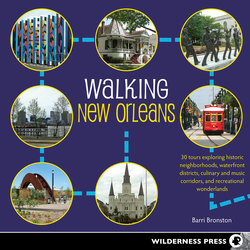Читать книгу Walking New Orleans - Barri Bronston - Страница 10
На сайте Литреса книга снята с продажи.
ОглавлениеINTRODUCTION
THE MANY RECENT ACCOLADES that New Orleans has received show just how far the city has come since August 29, 2005, when Hurricane Katrina became one of the most horrific disasters our country has ever known. That powerful, life-altering storm destroyed approximately 80 percent of New Orleans, killed more than 1,800 people, and forced hundreds of thousands to flee the city, some forever. Even worse, it had some politicians arguing against spending federal dollars to rebuild a city that lies 7 feet below sea level.
“It looks like a lot of that place could be bulldozed,” then–Speaker of the House Dennis Hastert famously said just a few days after the storm.
There certainly was bulldozing to be done, but thankfully it was to make way for the rebuilding. That doesn’t mean New Orleans has fully recovered—a decade later, some of the city’s poorer neighborhoods continue to struggle—but overall, New Orleans is better than ever. Public education has improved, the movie business is booming, and in a city known for its dining scene, there are actually more restaurants today than there were before the storm.
There isn’t a better way to see what all the fuss is about than by foot, be it through the historic Irish Channel, the funky Marigny, the colorful Bywater, or any of the other 27 walks in this book.
In big news for walkers, the Lafitte Greenway, a 2.6-mile multiuse trail and linear park, is scheduled to open in the spring of 2015. The greenway follows the route of the Lafitte Corridor, which was established as a shipping canal in the mid-1700s and later became a railway. A completed section of the greenway—which when finished will extend from Basin Street near the French Quarter to Canal Boulevard in the Lakeview neighborhood—is a point of interest in Walk 17, Mid-City.
New Orleans is far from utopic, and I struggled with whether or not to include some areas. I went back and forth with Treme, Oretha Castle Haley Boulevard, and even parts of the beloved French Quarter, but in the end I decided that there was too much historical significance and too many good things happening in these places to exclude them.
As you would on any walking tour, in any city, use common sense: Walk in groups, and avoid walking after dark. And as you’re trekking away, be on the lookout for broken sidewalks and potholes, which sadly are common sights in many a New Orleans neighborhood.
Oh, and don’t forget your water—especially if you plan to conquer one of these walks during the city’s infamous sweltering summer.
Gibson Hall, Tulane University (see Walk 15)
